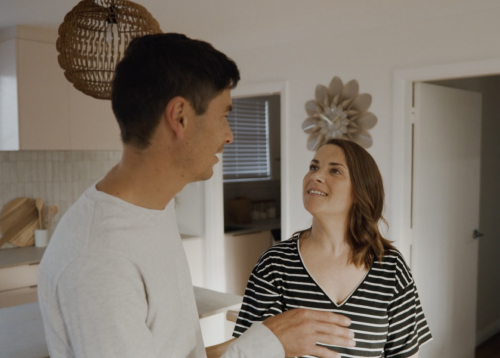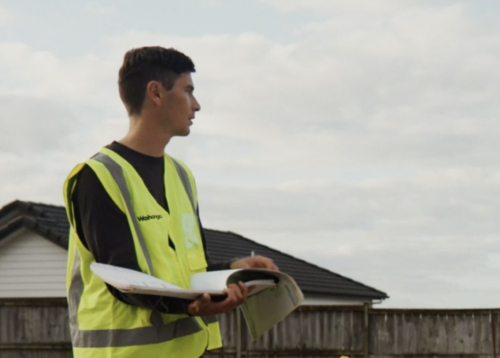Two Sales And Marketing Strategies To Help Get Your Cafe' Humming
In the café business, you can’t afford to rest on your lattes. The drive to keep customers and gain new ones is never-ending, but you can make it fun. Continually steering your business in the right direction is a truly satisfying task, especially when you can measure progress through your bottom line.
Here are some strategies that will help to keep your café, restaurant or bar on the sunny side of profit street.
Strategy one – the upsell
You’ll be familiar with this strategy, because you’ve probably encountered it at a service station. When you’re paying for your gas, the checkout attendant politely suggests you might want today’s special deal on chocolate bars. It’s usually done in a way that’s not off-putting, so you don’t feel bad about saying “no thanks”.
In the café, bar or restaurant situation, an upsell could involve suggesting the customer might want to upsize or titivate their order, i.e. a large cappuccino or a side of bacon with their pancakes. Or you could put a freshly baked basket of cheese muffins right next to the till and say “these have just come out of the oven” just before a coffee transaction goes through.
Repeatedly upselling on coffee or hot chocolate size can make a big difference to your business performance. If you persuaded just half of your customers to opt for a larger size, you could increase sales by around 12% a year*. Here’s how that works:
*Lets say your café sells around 200 cups of espresso a day and that the price for a small hot drink is $4.50, with the largest size costing $5.20. If all the coffees you sell are small, and you’re open six days a week, you’ll generate about $280,800 a year. If half of those coffees are upsized to a large, the total generated by coffee increases to $302,640. There will obviously be an increase in materials, but quite a big portion of that extra $21,840 would be icing on the cake (profit!).
Adding a $1 biscotti or cookie to 25% of your espresso orders is another way to upsell your daily customers. The biscotti might cost only 20 cents to make, so additional profit would be about $12,480 (based on the average of 200 cups of espresso a day). You can make it fun by calling it the ‘cookie du jour’ and describing the flavour on a chalk board right next to the till.
Upselling tips:
- Don’t just say “would you like a cookie with that”. Say something like “have you ever had a banana pecan cookie? They go really well with a flat white”.
- Use a mini specials board to spruik your upsell and don’t be shy about the description, i.e. “Susie’s triple-good chocolate granola cookies – baked today!”.
- Smile and say you had one earlier and it blew your mind.
- Be careful not to put too much pressure on the customer; joke about it if they turn you down, i.e. “well, it was worth a shot…” or “so much self-control, I’m impressed”. If you’ve been in the café business for a while, you’ll know how to handle the banter.
- If one of your employees is really skilled at upselling customers, get that person to run a training seminar for the others. Have a before-work session to get everyone good at upselling.
Strategy two – get into marketing
Marketing is something that needs to happen on purpose, rather than by accident. To keep the customers you’ve got and attract a steady stream of new customers, you need to devise a marketing plan, then put it into action. For your plan, direct your focus to six areas:
1. Branding
In the hospitality world, branding is almost more important than having a decent espresso machine. Your establishment’s name, logo, colour palette, décor style, staff uniform, music and cuisine style all contribute to your brand. If you feel it’s time for a refresh, consider these points:
- Names need to be memorable, easy to pronounce and suitable for your target market. You also want a name that’s unique, so you won’t get confused with competitors.
- Your theme, like your name, is a chance to stand out from the crowd. However it needs to be relevant to the people who are most likely to be eating and drinking at your place. There’s no point theming your café as a funky Mexican cantina specialising in margaritas and gourmet tacos if your customers are mostly retirees from the rest home around the corner.
- Colours and furniture need to be in keeping with your theme. Consider the wisdom of employing a professional interior decorator – it could be money well spent if your décor gets rave reviews.
Logo design is also something best left to an expert. It should fit with your name, theme and colours. Logo design is often more than just your name in a particular font; it can include imagery or icons that fit with your brand.
2. Online advertising
It’s mind-boggling to realise that just 20 or so years ago, listing cafes and restaurants in the Yellow Pages was considered a smart tactic. People used to actually look places up in giant books!
Obviously, times have changed. Now your first go-to for increasing the profile of your business is the online world, in all its various shapes and forms. Whether you plan to DIY your online marketing or hire a specialist to do it for you, it’s helpful to have a laundry list of online practices that work best for hospitality businesses.
- A decent website: By this we’re suggesting a responsive (adjusts to fit all devices) site that has gorgeous pictures of your place, your food and your staff. Not having a website for your café, restaurant or bar is like going skiing dressed in shorts and a tee shirt. Kind of dangerous. Think of your website as your digital front door; an entrance to your business that’s just as important as your real front door. If you take reservations, offering online booking makes it easier for people to secure a table.
- A blog: This probably isn’t quite as important as your website, but if you’re a fine dining restaurant that really wants to cut through the competition, showcasing your chef’s knowledge is the way to go. Your blog can live on your website, then get promoted through social media links. Try to make the words as exciting as the pictures.
- Google Maps listing: Sign up for Google My Business to help with Google search and get onto Google Maps. This will help when people search for ‘café near me’ or ‘[suburb name] restaurant’. It’s also where Google reviews about your business can be accessed (more about that further down).
- A Facebook page: You might not personally love this particular social media channel, but it could be very useful for your business. You can run competitions on it, promote new menu items, encourage followers to share posts, create Facebook events, make special offers, gather good reviews and much more. You can even take reservations through your Facebook page.
- A LinkedIn page: If your establishment gets lots of trade from business people, LinkedIn is an excellent channel for promoting working breakfasts, lunches and dinners. Business people have to eat!
- Instagram: For food and drinks that are beautiful to behold, visual social media channels are great. Brush up your photography skills and get snapping. Use table talkers to attract followers to your Instagram feed.
- Twitter: Handy for special offers and mini-news blasts, like 'up-sized' coffee for the price of a small coffee or St Patrick’s Day green muffins.
3. Customer reviews
If your establishment is the sort of place that regularly gets positive feedback from customers, harness it. With a table talker, you can encourage clientele to leave reviews on Google, Facebook and Trip Advisor. In New Zealand, Zomato is also a useful platform for reviews.
Of course, the downside of a blanket request for reviews is that you might get the occasional dose of negative feedback. If you’re concerned about this, you can always selectively request reviews from the customers who love you the most.
Make sure you monitor reviews, because there could be information in them that helps to sharpen your service. Taking feedback on board is good for business. The best restaurants in New Zealand are generally humble about feedback, rather than arrogant.
4. Specialised strategies
Tourism: Does your café, bar or restaurant rely on tourist trade? If it does, your local tourism authority might be able to send a few bloggers, travel writers or travel agents your way for a free meal, in return for publicity and endorsements.
Loyalty scheme: Lots of cafés run loyalty schemes to keep customers coming back. This can be a simple card, which is stamped every time somebody buys a coffee. Ten stamps equals one free cup. Or you can go techy and get a customer loyalty app, aka digital loyalty programme. Not only do these apps let you reward customers for repeat purchases, but you can use them to push special offers out to your database. For example, ‘earn two loyalty points for every cake purchased on Wednesday’.
5. Offline marketing
Certainly the planet is getting more digital by the day, but we all still live in the real world. And that means plenty of opportunities to promote your business in hard copy. You can:
- Stick a sandwich board out front to promote a special offer or something particularly yummy.
- Put flyers under the windscreen wipers at the nearest car park. Do a letterbox flyer drop around the residential areas closest to your place.
- Have posters printed and get them pasted up where bands advertise their gigs.
- Do a ‘I’ll-pat-your-back-if-you-pat-mine’ collaborative promotion with a clothing or homeware retailer who shares your audience. You keep a pile of postcards advertising their gear at your checkout; they do the same in return.
- If your establishment is suitable for conferences or meetings, join the local business organisation and attend their networking events.
- Sponsor a charity or sports team, so that you can leverage their communication channels to promote your business.
- Give regular customers a reusable takeaway coffee cup that wears your brand. They’ll appreciate the effort and you’ll have a mini billboard on their desk or in their car.
- When your local school has a gala day, donate a gift voucher in return for publicity at the event.
- Invite your local newspaper’s food editor for a free meal, in return for a review in the paper.
6. Service enhancements that support marketing
To encourage word of mouth advertising, which will always be one of the best marketing channels for a food and/or beverage business, it makes sense to treat your service level as ‘work in progress’. The journey to perfect customer service never ends; continuous improvement is a path, not a destination.
If you don’t already run regular staff meetings, consider introducing them as a way to keep everyone up-to-speed on how to win customers over. You can also brainstorm ideas for continually lifting the service level at your establishment. Here are just a few ideas to get you started:
- Have a ‘compliments or complaints’ box in your dining area, so that customers can anonymously alert you to problems or provide positive feedback.
- Train servers to recite the daily specials in an attractive way. Do some role playing with your team to improve their technique.
- Come up with a best-practice technique for taking and checking orders.
- Develop strategies for preventing common customer frustrations, like not being able to find the loo or waiting too long for their bill at the end of a meal.
- Come up with best-practice guidelines for how to deal with unhappy customers who think your product is substandard, i.e. the customer is always right and deserves a refund.
- Polish up essential techniques, like clearing tables and pouring wine.
- Work up dialogues to greet and farewell customers, so that everyone feels special.
Business Insurance
Whatever business insurance you need State has you covered. If you’re in the hospitality industry, you should consider the following types of insurance:
- Business Assets Insurance: Material Damage and Mobile Assets insurance protects your buildings, contents, stock and customers' goods.
- Business Interruption Insurance: Get your business back on track when an unforeseen event prevents you from operating as usual.
- Business Liability Insurance: Costs for any accidental loss or damage to someone else's property and even injuries to people can fall on you, leaving your wallet lighter if you don't have any cover.
- Business Vehicle Insurance: Protect the vehicles that help you do your job with a business vehicle policy. We also cover your legal liability if you accidentally cause damage to someone else's property and/or injure someone while using your business vehicle.
- Machinery Breakdown Insurance: You'll be able to keep your business going with Machinery breakdown insurance.
*Based on the average price of a small vs large expresso and calculating the income across the year for both.
You might also like...
-
 March 2023Business Blog | State Insurance
March 2023Business Blog | State InsuranceThe pitfalls and dangers of running a business
-
 March 2023Business Blog | State Insurance
March 2023Business Blog | State InsuranceHow to grow a business and take risks
-
 October 2022Business Blog | State Insurance
October 2022Business Blog | State InsuranceSmall Biz Support
